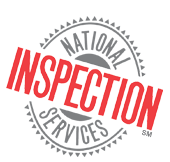The struggle to define environmental due diligence from a legal perspective continues unabated in our nation’s courts. Due diligence is defined by ASTM’s Standard Practice for Environmental Site Assessments: Phase I Environmental Site Assessment Process as whether one has conducted “all appropriate inquiry into the previous ownership and uses of the property consistent with good commercial or customary practices.”
It is not defined well enough to apply in a standardized way to a real estate transaction because there are to many factors to consider in determining whether one has adequately conducted all appropriate inquires. The struggle is motivated by an interest to use the “innocent landowners defense” under federal law. The standard can only be met if “all appropriate inquiry” has been conducted, and the intent is to relieve a party of environment liability, providing a safe harbor from liability under the Comprehensive Environment Response, Compensation and Liability act. (CERCLA). Anecdotal cases have emerged but are so fact-specific that it is difficult to discern any broad or uniform rule. Meanwhile, environmental due diligence is emerging as a way to a certain and limit economic risk without regard to the nebulous legal safe harbor from cleanup liability.
At the same time, corporations are focusing greater attention on environmental responsibility. Traditionally, the driving force has been regulatory enforcement. However, today the “surrogate” regulator-financial institutions, insurance companies, investors and shareholder-are demanding greater environmental responsibility. Moreover,the public wants to purchase environmentally friendly products from environmentally responsible companies. Two new standards in the environmental industry advance the development of responsible corporate environmental records and environmental diligence to minimize liability.
Beginning n the late 1800’s the American society for Testing and Materials (ASTM) spearhead efforts to establish uniform due diligence standards for real estate transactions. The first was the ASTM 1527 Phase I and ASTM 1528 Transaction Screen standards, which are the most widely recognized standards for conducting environmental due diligence in the United States. The latest effort focuses on the qualifications of those conducting the due diligence.
Another organization, the International Organization for Standardization (ISO), has recently developed standards for corporate environment behavior. The ISO 14001 Environmental Management Systems Standard will be finalized later this year. The impact of the ASTM and ISO standards on environmental professionals and corporations is significant and should not be underestimated.
ASTM’s Role ASTM’s most recent contribution to this debate comes from recently released draft standards, “New Standard Practice for Accreditation Criteria to Assess Certification Programs for Environmental; Professionals.” ASTM’s intent is to develop accreditation criteria to evaluate credential of certifying organizations. The criteria will eventually become the ground rules for organizations seeking to certify “environmental professional.
As stated in section 1.1.2 of the standard, “The standard will enable a user of environmental services to distinguish between quality professional certifications of high integrity and lower quality certification programs.” The document warns the standard “does not propose to address any specific certification program” and that it is the responsibility of the user to determine whether a specific certification program meets the criteria. Nonetheless, the new standard may be controversial. The mere reference to “high integrity” and “lower quality” is certain to spark a debate among professionals whose ability to gain certification could have significant impact on their livelihood.
The standard provides two options for certification program accreditation. The first involves independent accreditation through professional accreditation body, such as the Council of building and Scientific Specialty Boards (CESB), and suggests that such certification brings the “highest level of credibility.” The second, and by implication, less credible means accrediting the certification program, is through “self-declaration.” The self-declaration option requires conformity with an appended list of 34 components in six categories. Among the requirements in ASTM’s accreditation criteria are:
- Development and publication by the certification organization of the detailed “body of knowledge” required by practitioner,
- Establishment of minimum educational and experience requirements,
- Documentation supporting a candidate’s experience,
- Adherence to a professional code of ethics,
- Examination of a candidate’s knowledge and
- Necessity for recertification.
The ASTM 1527 Phase I Standard requires the Phase I work be preformed by an environmental professional. Unfortunately, the standard does little to define such a professional.
The new ASTM Accreditation Criteria Standard should be able to fill the gap. If an “environmental professional” certification by a certifying body confirms to the ASTM accreditation criteria, a user can have confidence that the practitioner meets at least minimum professional requirements.
ISO’s Role Though the ASTM standard focuses on the individual environmental p; ~professionals individual environmental p ~professional without reference to corporate affiliation tion, the ISO 14001 standard focuses on one overall environmental governance of a corporate entity.
The ISO 14001 Environmental Management Systems (EMS) Standard, is expected to become international standard later this year.
ISO 14001 is the standard against which a company’s environmental management system would have to be certified. According to the standard, a company must maintain five core elements of an environmental management system(EMS): commitment and policy, planning, implementation and operation measurement and evaluation and review and improvement.
There are four reasons a corporation might want to seek certification: decrease costs, market opportunities, pressure from the financial community and the public, and corporate image and community goodwill.
In addition to the four”market-driven” motivations, there may be other incentives. Voluntary initiatives, such as those contemplated by the Environmental Protection Agency’s Audit Policy and Environmental Leadership Program, the U.S. Department of Justice’s sentencing guidelines, and the U.S. Department of energy’s defense contractors procurement orders, provide incentives and possible legal benefits for environmental self auditing.
